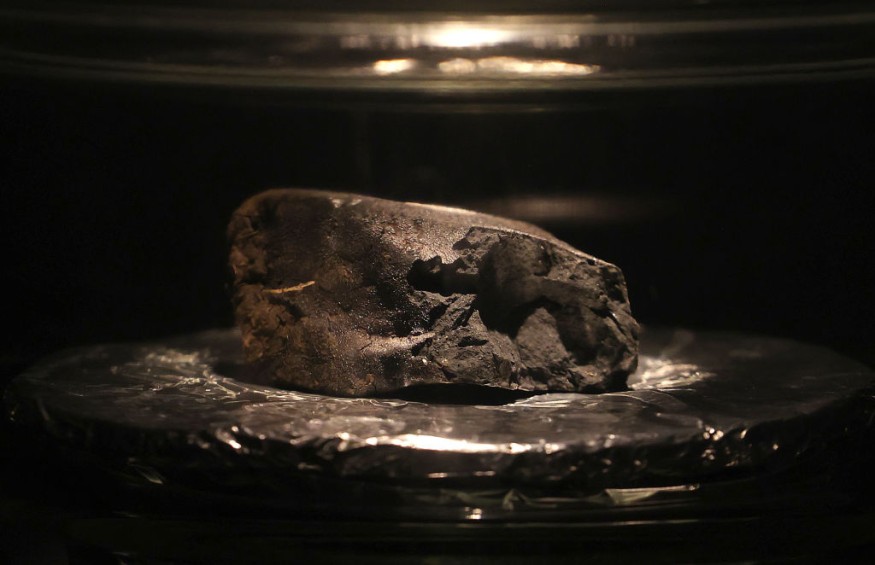In a blazing fireball, the Winchcombe meteorite fell on Earth in February this year. Now, experts from the international Meteoritical Society have approved its classification as extremely rare space rock and extremely valuable, worth almost $140,000 (£100,000).
Experts say that this is by far the most important meteorite to fall and recovered in Britain. It was donated to the Natural History Museum and was categorized as the unusual CM2 carbonaceous chondrite of space rock with organic chemicals.
Details of the space rock's confirmation as an extremely rare meteorite are published in the bulletin database of the society. The Winchcombe meteorite is said to be 4.6 billion years old, similar to the beginning of the Solar System.

Winchcombe Meteorite: The First Meteorite Recovered in the UK for 30 Years
Winchcombe Meteorite is a dark gray to black space rock and is considered to be a 'Mighei-like' meteorite, which is related to one of the oldest and most primitive types of meteorite available that was found in Ukraine in the late 19th century.
Its classification in the society's bulletin database tells its story and process of retrieval, as well as details from cameras that observed it, eyewitnesses that saw it fall, and its chemistry.
Dr. Ashley King, a researcher in Natural History Museum, told the BBC World Service that the meteorite formed at the start of the Solar System, which serves as a time capsule that holds the secret to the building blocks of the Solar System.
According to the Daily Mail, the Winchcombe meteorite is the first meteorite to be recovered in the United Kingdom for 30 years. It fell on a spectacular orange and green fireball that streaked across the sky as seen from home security cameras, which made it easier for scientists to track its exact location.
All pieces of the meteorite are now transferred to the Natural History Museum, where scientists could conduct studies on it to give them insight into how life on Earth began.
Winchcombe Meteorite Might Hold the Key to the Origins of Life in Space
The extremely rare space rock contains water in its atomic signature, similar to the water found on Earth. But scientists said that further research is needed to confirm this claim.
According to BBC News, Winchcombe is mostly made up of phyllosilicates or clays that result from silicate rocks as they come into contact with water, as the H2O molecules bound up to these minerals.
Scientists have to measure and compare its specific isotopic or atomic signature to the water found on Earth. According to theories, the bombardment of asteroids and meteorites could have delivered the water to the oceans.
Moreover, the carbon content on the space rock is in the order of a few percent, fascinating researchers as they search for the origins of life. Experts said that studying meteorites like the Winchcombe meteorite could give insights into the chemical feedstock that promoted life on Earth.
Analysis of the meteorite suggests that it entered the top of the Earth's atmosphere on February 28, weighing 110 to 132 pounds (50 to 60 kilograms).
Read also: Erg Chech 002: 4.6 Billion Year Old Meteorite Shed Light on the Evolution of the Solar System
Check out more news and information on Meteorite in Science Times.











